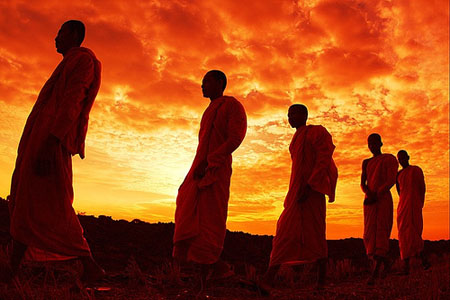
The religion Buddhism founded by Siddhartha Gautama known as "Buddha" entered China, almost 500 years after his death. Buddhism had already spread north and west into Central Asia and it was inevitable that Buddhist missionaries would travel the great trade routes east into the Han State. There are no references to an early Buddhist presence in the official Confucian literature, but other sources do speak of an oral transmission of the scriptures in 2 BCE, and of a Buddhist community in 65 CE.

Around 150 CE Buddhist missionary monks established a translation center at the Han Dynasty capital Lo-yang, and from the work done there two movements arose, the Dhyana and the Prajna. The first was based on Theravada Buddhist texts on meditation (Skt. dhyana) and breathing techniques. Although customarily called the Dhyana School, it is more properly thought of as a sustained engagement on the part of the Chinese, indulged by the translators, with the theoretical and practical details of Buddhist meditation. The Chinese were greatly interested in these techniques, primarily because of the similarities between them and the practices taught by their own indigenous religion, Taoism. The Prajna, or Wisdom, School, again not a single institution, constituted the other major trend in Han Buddhism. This movement focused on the Prajnaparamita Sutras, or Perfection of Wisdom Scriptures, of Mahayana Buddhism. These were predominantly philosophical works primarily concerned with expounding the doctrine that the ultimate nature of reality is "empty" (Skt. sunyata; Ch. kung) of any independent existence. These texts caught the attention of the Chinese, again partly because of similarities with their own inheritance, this time with the philosophies of the Taoists Lao-tzu and Chuang-tzu.
